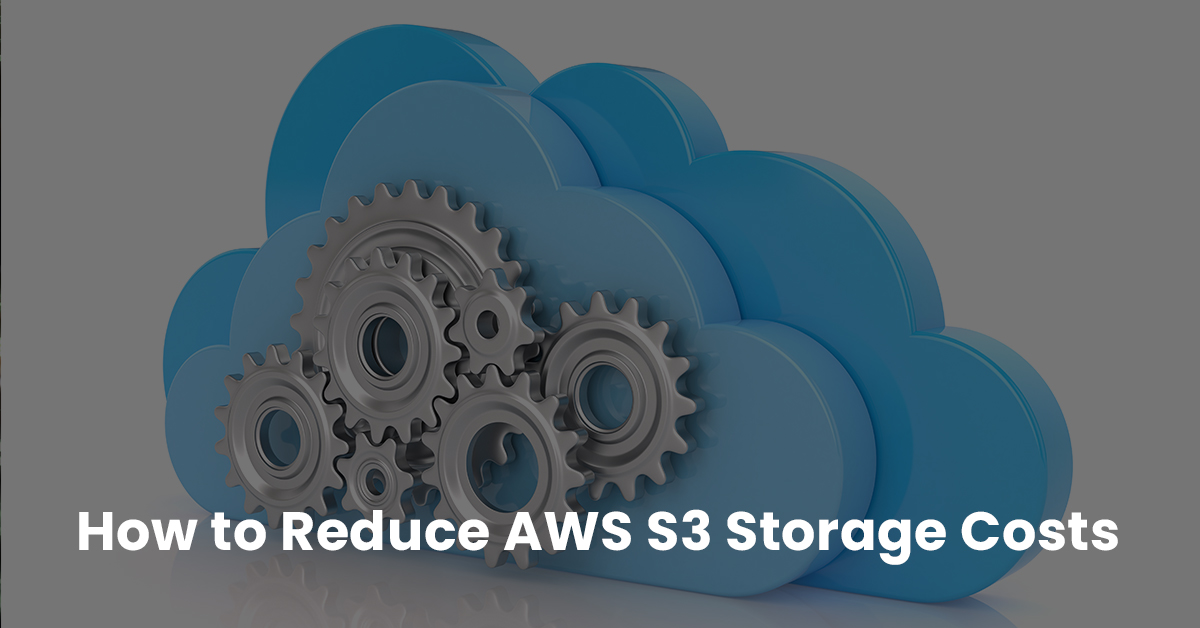Amazon S3 is the most popular of the various AWS Storage Services. You can use AWS S3 to store big data analytics, blogs, enterprise backup storage, static websites, personal files, and gallery items. In addition, it comes with flexible pricing that allows you to pay for the services you need.
You can use Amazon S3 to build highly efficient and scalable applications. However, despite its efficiency, AWS S3 storage tends to be costly. These costs can escalate significantly, increasing your spending. Besides, the billing can become complicated and hard to comprehend, posing a huge challenge.
This article will highlight several strategies for cutting AWS S3 storage costs without cutting its performance.
How Does S3 Store Data?
AWS S3 stores data in six classes designed to accommodate different requirements. They are:
- S3 Standard
- S3 One Zone – IA
- S3 Standard — Infrequent Access (IA)
- S3 Standard Intelligent Tiering
- S3 Glacier
- S3 Glacier Deep Archive
S3 Standard is the normal storage for regularly accessed data. The S3 Intelligent Tiering stores data with changing patterns, while the S3 One Zone — IA and S3 IA are low-cost storage classes for data that users don’t access frequently.
Users utilize S3 Glacier and S3 Glacier Deep Archive to archive and store long-term backup data.
How Can You Reduce AWS S3 Storage Costs?
AWS S3 costs depend on the amount of data you have on hand. Here are various ways to reduce AWS S3 storage costs:
Remove Unused S3 Objects
You likely have a lot of outdated or unnecessary data that you do not need. When lots of unused data piles up, costs can increase significantly.
You will always incur charges for data stored on S3, and you should periodically review your datasets for unused objects and remove them immediately to cut storage costs. This also applies to cloud logs. You can choose to clear logs periodically, let’s say every 30 or 90 days.
Delete Entire S3 Buckets
When you have buckets that you no longer access or belong to past workloads, you can delete them entirely. All you need is to enable the activity metrics that help discover dormant buckets. Once you have discovered the dormant buckets, you can decide whether they are worth keeping or deleting.
Expire Incomplete Multipart Uploads
When uploading big objects, Amazon S3 uses multipart upload. It divides big components into smaller fragments where it uploads each fragment independently. AWS then combines the uploaded fragments into a complete unit.
This process is prone to interruptions, where the S3 bucket upload keeps some fragments. The kept parts waste terabytes of space, and it’s best to expire them immediately. In addition, expiring them allows for more free space on S3, saving costs.
Compress Data Before You Send to S3
Use fast compression, such as LZ4, improve better performance while reducing the need for more storage and reducing costs. Compressed files are smaller than the original files and take little space.
For use cases, you can use compressions, such as ZSTD. Once you’ve made the transfer, you can download the file and decompress it. This saves lots of space, especially when dealing with text files.
The Bottom Line
With the right strategies on hand, it’s possible to cut AWS S3 storage costs. All you need is to ensure that you don’t have idle data or buckets that increase costs.
The nOps billing and cost optimization tool gives visibility into your AWS S3 storage so you can easily cut unnecessary costs. Start your free trial today to see how you can easily cut the ever-increasing S3 storage costs.



